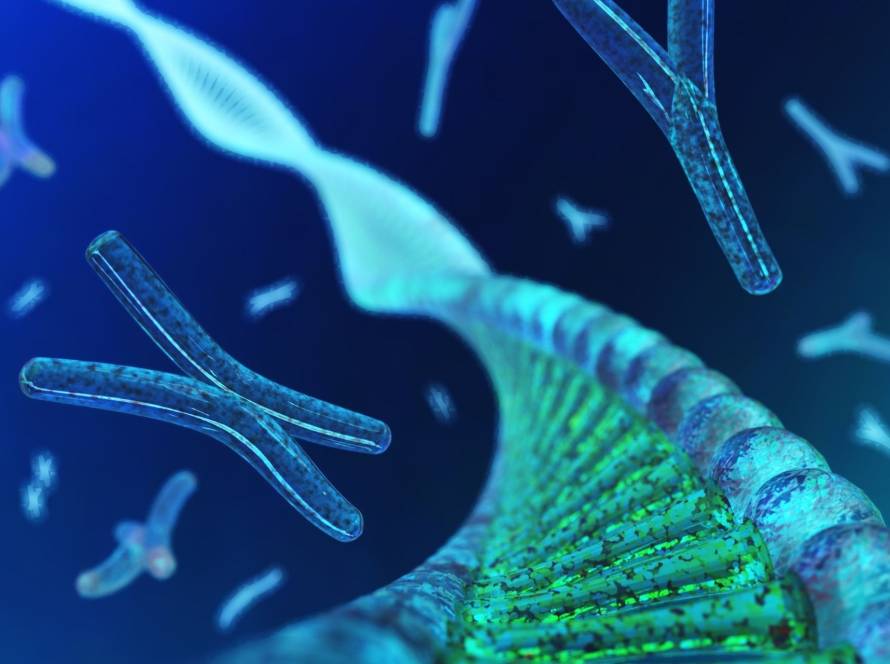Our body has over 200 different types of cells that perform unique functions, even though they share similar DNA. This amazing variety shows us the fundamental difference between genome and epigenome. The genome stays constant, while the epigenome actively controls how our genes express themselves.
Let’s take a closer look at how the relationship between our genome and epigenome might help us live longer, healthier lives. This piece breaks down the significant differences between these two biological systems and what it all means for aging and longevity.
What is the genome
A genome represents the complete set of genetic information stored in long molecules of DNA called chromosomes. The nucleus of nearly every cell contains approximately 3 billion DNA base pairs. This forms a biological instruction manual that guides our development from a single cell into a complex organism.
The complete DNA blueprint
Our genome has roughly 20,000 protein coding genes spread across 23 pairs of chromosomes. These genes make up just 2% of our total DNA, while the remaining 98% consists of non-coding sequences.
The Human Genome Project, completed in 2003, mapped 92% of our genetic blueprint. Scientists finally decoded the remaining 8% in 2022. This revealed many unknown genes and repetitive DNA sequences that affect cellular function. Their work helped them find more than 2 million previously unknown sequence variants in the human genome.
How genes control body functions
The brain uses at least one third of our genes, more than any other body part. These genes control our movement, thoughts, feelings and behavior through complex protein production mechanisms.
Each gene contains instructions to make specific proteins. These proteins form the internal machinery within cells and enable communication between them. The genetic code uses a quick system where three letter combinations of DNA bases (codons) specify which amino acids should link together to form proteins. This code works almost the same way in all living organisms.
Understanding the epigenome
The epigenome acts as a dynamic layer of chemical modifications that regulate gene activity without changing the DNA sequence. This complex system of molecular switches determines when and where specific genes turn on or off, which shapes how our cells function.
Chemical markers that control genes
Several key mechanisms help the epigenome control gene expression. DNA methylation stands out as one of the main epigenetic modifications. Histone modifications are vital components of epigenetic control. According to studies, these chemical tags can activate or silence gene expression through various changes, including:
- Methylation and acetylation at lysine residues;
- Phosphorylation;
- Ubiquitination;
- ADP ribosylation.
The epigenome uses chromatin remodeling to make genome wide changes in nuclear architecture. This process depends on histone modifying enzymes and ATP dependent chromatin remodeling complexes to change DNA accessibility.
How the epigenome changes
Our genome stays fixed, but the epigenome shows remarkable flexibility. Environmental factors like nutrition, exercise and stress levels can trigger epigenetic modifications. These changes target specific genomic regions in certain tissues rather than occurring randomly.
Research shows that epigenetic age changes throughout the day. Cells appear youngest late at night and age by up to 5.5 years near midday.
The way our epigenome responds to environmental factors creates opportunities and challenges for health. Good food and manageable stress levels promote beneficial epigenetic changes. Poor choices like processed foods, smoking and chronic stress can trigger harmful modifications that affect gene expression.
Most epigenetic marks reset during fertilization, but some modifications can pass across generations. This inheritance suggests our lifestyle choices might affect not only our health but also our descendants well being.
Key differences between genome and epigenome
The key differences between genome and epigenome affect how our genes work and impact how long we live. Learning about these differences helps us understand ways to age better.
Fixed vs changeable nature
The genome stays remarkably stable throughout our lives. It acts as a fixed blueprint that remains the same in all nucleated cells. The epigenome works differently, it’s highly adaptable and changes based on cell type, developmental stage, sex and age.
This adaptability means cells with the same genetic sequences can have very different epigenomes. The epigenomes flexibility lets cells adapt to environmental pressures and keeps us healthy. Environmental stressors can sometimes damage the epigenome.
Inheritance patterns
Genetic and epigenetic information passes down through generations in different ways. DNA replication handles genetic inheritance by passing on genomic sequences. Epigenetic inheritance works through secondary changes to DNA or chromatin, mainly through maintenance methylation.
Epigenetic inheritance can span multiple generations. Scientists see two main types:
- Intergenerational inheritance: epigenetic marks passing from parent to child;
- Transgenerational inheritance: information flowing from one generation to multiple subsequent generations.
The epimutation rate is a big deal as it means that spontaneous gains and losses of methylated sites happen more often than genetic mutations. This higher rate creates new inheritable variations that help adapt to changing environments.
Control mechanisms
The genome and epigenome control cellular functions differently. The genome has instructions to build proteins using a nearly universal genetic code. Studies show that epigenome uses three main control methods:
- DNA methylation: methyl groups attach to specific DNA locations and affect gene activity;
- Histone modifications: chemical tags change histone proteins and determine which DNA regions cells should use;
- Non-coding RNA: These molecules help with DNA methylation and histone modifications to silence genes.
Epigenetic control mechanisms work differently in various cell types and change over different time periods. These changes can be reversed, making them good targets for precision medicine. Each persons unique epigenomic patterns give different ways to customize predictions about health risks and drug resistance.
How aging affects the epigenome
Scientific research has found that there was profound changes in our epigenome as we age. These changes fundamentally alter how our genes express themselves through specific patterns that influence our health and longevity.
Age related epigenetic changes
The aging process triggers systemic alterations in DNA methylation patterns throughout our genome. Studies show that aging guides global DNA hypomethylation in repetitive regions like short interspersed nuclear (SINE) and long terminal repeats (LTR) elements. Specific genes experience localized hypermethylation among other changes. These changes affect development controlling genes and transcription factor binding sites.
Aging cells show substantial changes in their chromatin structure. Our genome experiences a 50% reduction in nucleosome occupancy. This decline creates profound alterations in chromosomal architecture and gene expression patterns.
Disease risk factors
The epigenetic clock serves as a groundbreaking tool in aging research that measures biological age through DNA methylation patterns. Studies show that accelerated biological aging relates to higher risks of cancer, diabetes, cardiovascular diseases and dementia. This “DNA methylation age” provides accurate estimates in tissues of all types and life stages.
Cellular memory and aging
Aging cells develop specific chromatin structures called senescence associated heterochromatic foci (SAHF). These compact chromatin regions contain multiple layers and serve vital roles in:
- Regulating gene expression;
- Maintaining cell cycle arrest;
- Suppressing DNA damage signals.
Scientists have found that restoring epigenetic information can reverse signs of aging. This breakthrough suggests that epigenetic changes might be the foundations of aging in mammals. It opens new possibilities to develop therapeutic interventions that target age related diseases.
Lifestyle factors that modify the epigenome
Recent research shows how our daily lifestyle choices shape our epigenetic makeup. These findings reveal promising ways we can influence our lifespan through simple changes in our routine.
Diet and nutrition effects
Our food choices can powerfully change epigenetic mechanisms. Studies show that diets rich in methyl donating nutrients alter gene expression through DNA methylation. These changes happen faster during early development as the epigenome establishes itself.
Research associates folate intake with increased p16 tumor suppressor gene expression. Green tea polyphenols can block DNA methylation. The compounds found in broccoli sprouts and garlic work as histone deacetylase inhibitor].
Exercise effects
Exercise creates major epigenetic changes across many tissues. Research shows that physical activity leads to DNA hypomethylation in important skeletal muscle genes as an early adaptive response. This process makes metabolic efficiency better and improves oxidative capacity and contractile activity by changing gene expression profiles.
Studies prove that even light exercise helps a lot, just 15 minutes of daily physical activity reduces all cause mortality risk by 14%. Exercise changes DNA methylation throughout the genome in blood leukocytes. These changes affect the pathways responsible for cardiovascular fitness.
Sleep quality
Sleep patterns can speed up epigenetic aging. A study with 692 Korean adults found that poor sleep links to faster epigenetic aging. Each one point rise in Pittsburgh Sleep Quality Index leads to a 15% higher risk of metabolic syndrome in poor sleepers.
Disrupted sleep affects many biological processes including:
- Circadian rhythms;
- Hormone secretion;
- Glucose homeostasis;
- Chronic disease development.
Stress management
Long term stress creates substantial epigenetic changes through glucocorticoid exposure. Research shows that stress hormones change gene expression in the brain through DNA methylation. These changes affect the hypothalamic pituitary adrenal axis and influence how we respond to stress.
Mindfulness based practices help reduce stress related epigenetic changes through several ways:
- Attention regulation;
- Body awareness;
- Emotion regulation;
- Self perspective transformation.
Studies show that mindfulness based interventions can reverse stress induced changes across the genome. Long term stress makes inflammatory diseases worse and increases our risk of infections and cancer. Good social support, regular exercise and healthy sleep habits are vital for optimal epigenetic health.
Scientific evidence shows our epigenome has remarkable potential to influence longevity, while our genome stays fixed throughout life. Our daily choices can substantially affect epigenetic markers and extend our healthspan and lifespan.
Knowledge of these biological mechanisms helps us make better health decisions. Simple but consistent lifestyle changes create positive epigenetic modifications that can affect our longevity and future generations health.


